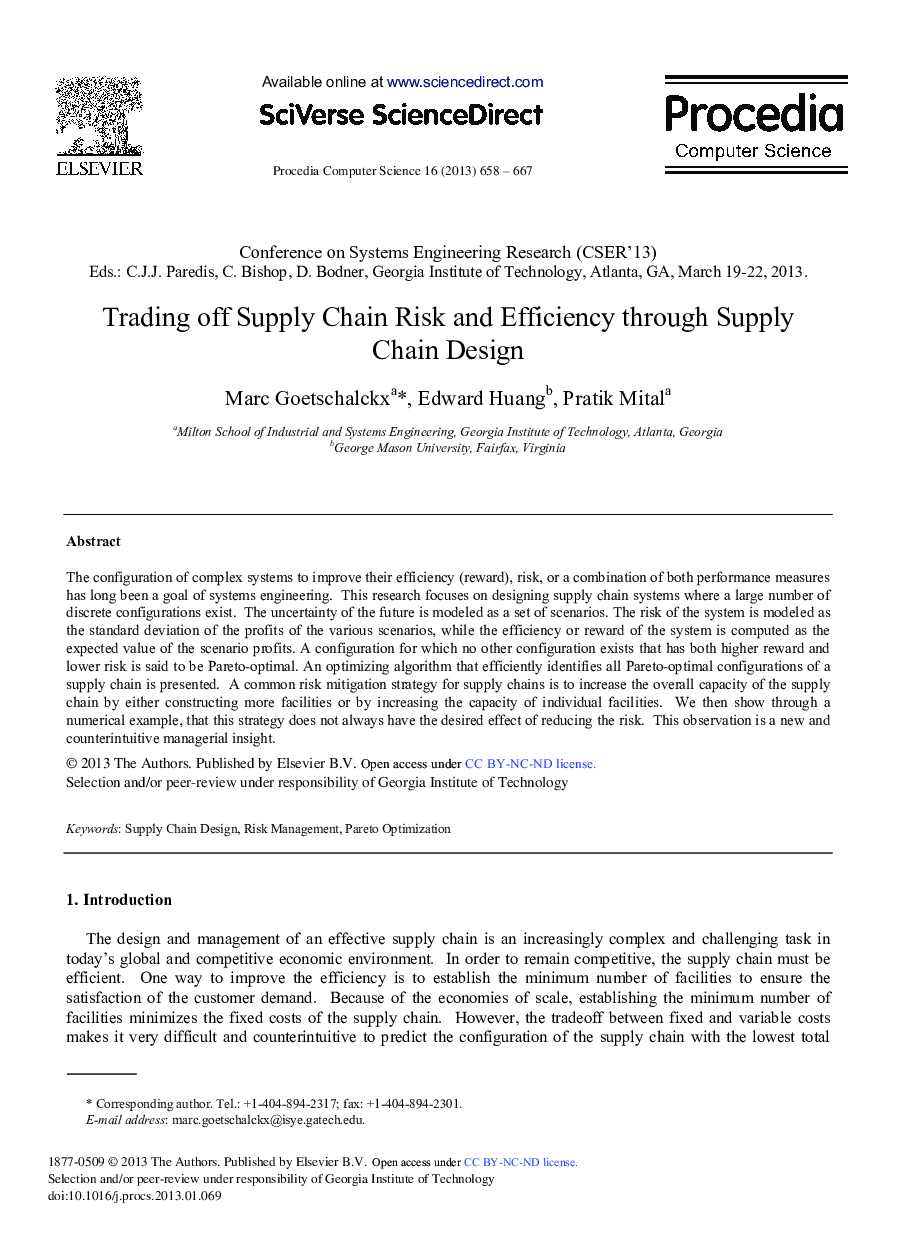| Article ID | Journal | Published Year | Pages | File Type |
|---|---|---|---|---|
| 486615 | Procedia Computer Science | 2013 | 10 Pages |
The configuration of complex systems to improve their efficiency (reward), risk, or a combination of both performance measures has long been a goal of systems engineering. This research focuses on designing supply chain systems where a large number of discrete configurations exist. The uncertainty of the future is modeled as a set of scenarios. The risk of the system is modeled as the standard deviation of the profits of the various scenarios, while the efficiency or reward of the system is computed as the expected value of the scenario profits. A configuration for which no other configuration exists that has both higher reward and lower risk is said to be Pareto-optimal. An optimizing algorithm that efficiently identifies all Pareto-optimal configurations of a supply chain is presented. A common risk mitigation strategy for supply chains is to increase the overall capacity of the supply chain by either constructing more facilities or by increasing the capacity of individual facilities. We then show through a numerical example, that this strategy does not always have the desired effect of reducing the risk. This observation is a new and counterintuitive managerial insight.
